Get PeakVisor App
Sign In
Search by GPS coordinates
- Latitude
- ° ' ''
- Longitude
- ° ' ''
- Units of Length

Yes
Cancel
Share ×

Scan the QR code and open PeakVisor on your phone
❤ Wishlist ×
Choose
Delete
Big White Mountain Ecological Reserve is a protected area located on the northern flank of Big White Mountain in the Regional District of Kootenay-Boundary of British Columbia, Canada. The reserve encompasses 951 hectares (2,349 acres) of land and includes the 2,315 m (7,595 ft) tall peak of Big White Mountain.
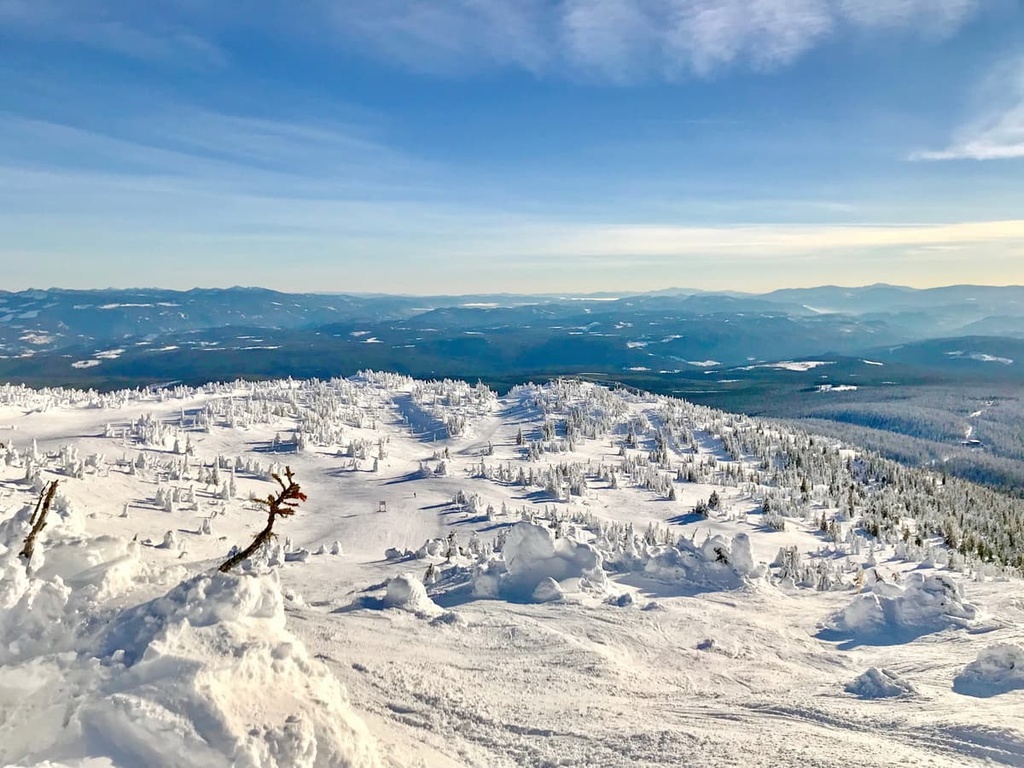
Located in the southern interior highlands of British Columbia, Canada, Big White Mountain Ecological Reserve encompasses the north flank of Big White Mountain.
The 951 hectare (2,349 acre) ecological reserve also includes a portion of Whitefoot Creek and a tributary to the West Kettle River. The reserve is adjacent to Big White Ski Resort, which is accessible via Highway 33.
Access to the park is limited to a logging road that terminates along the northern boundary or by passing through Big White Mountain Ski Resort. Previously, the resort operated its ski lifts during the summer to enable easier access to the hiking trails along the south side of the ecological reserve.
The southern interior of British Columbia has a very favorable climate for agriculture and forestry and, as such, there are very few protected areas. The high desirability of the land in the area increases the importance of the provincial parks and ecological reserves that protect the limited variety of ecosystems in the region.
The following are some of the other major protected areas located near the ecological reserve:
Big White Mountain Ecological Reserve is situated in the Beaverdell Range of the Okanagan Highland.
Big White Mountain is the tallest peak in the Beaverdell Range and in the entire Okanagan Highland. The Okanagan Highlands are sometimes considered a subrange of the Columbia Mountains. They are bordered by the Thompson Plateau to the west and the Monashee Mountains to the east.
In general, the mountains of the Okanagan Highland are rounded mountains and ridges with gentle, open slopes. Big White Mountain is the tallest mountain in the range, with about 2,315 m (7,595 ft) of elevation.
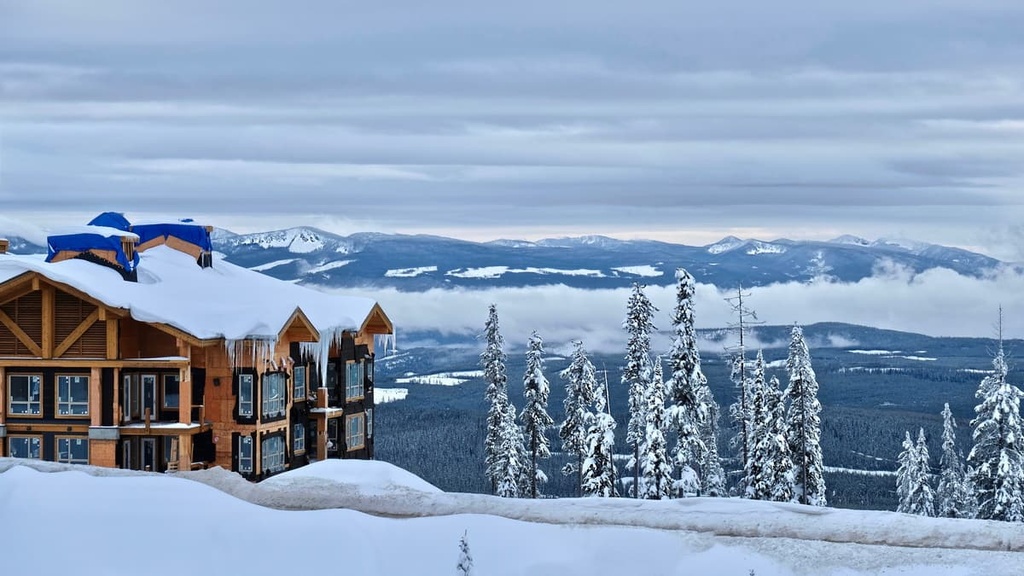
The mountain is primarily composed of granodiorite and quartz diorite, which are plutonic igneous rocks. The rocks formed by the intrusion of silica-rich magma that cools beneath the surface, within layers of other rocks.
At the end of the Pleistocene, the Cordilleran ice sheet was moving south when it overrode Big White Mountain and the rest of the region up to an elevation of about 1,800 m (5,900 ft). In the process, the ice sheet deposited till across the mountain and the Okanagan Highland. Above 1,800 m (5,900 ft), alpine glaciers were responsible for forming topographic features, such as cirque basins.
Big White Mountain Ecological Reserve was established to preserve a small example of the Engelmann Spruce-Subalpine Fir and Alpine Tundra Zones in British Columbia’s southern interior. The reserve protects old growth stands of Engelmann spruce and subalpine fir, as well as high elevation wetlands.
Additionally, the reserve is the only location of true alpine in the Northern Okanagan Highlands and it is home to large areas of krummholz. Some of the known rare species that have been identified in the reserve include alpine wintergreen, alpine Indian paintbrush, Elmer’s Indian paintbrush, and Engelmann’s sedge.
Other animals such as grizzly bears, black bears, caribou, mule deer, moose, cougars, mountain goats, and bighorn sheep may be found in the reserve; however, the area is too small to contain the whole range of most of the large mammals. Smaller mammals that inhabit the reserve include the hoary marmots, red squirrel, marten, wolverine, and the snowshoe hare.
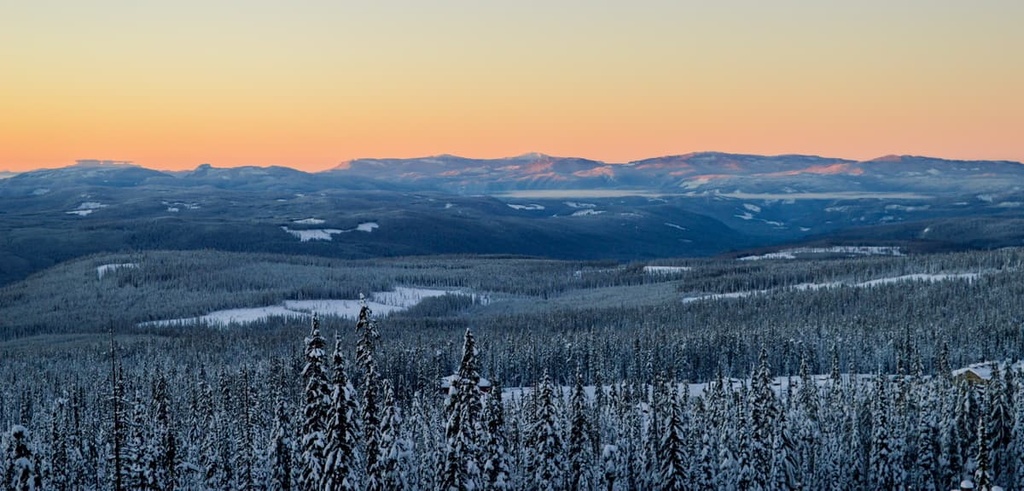
The reserve is a great place for birdwatching in the region because of its old growth forests where you may see gray jays, red crossbills, white-winged crossbills, Clark’s nutcrackers, or pine siskins. You may also catch a glimpse of golden eagles soaring overhead as they hunt marmots and squirrels in the alpine terrain.
Big White Mountain Ecological Reserve is part of the traditional territory of the Okanagan and Sinixt First Nations. There are currently no known archaeological sites in Big White Mountain Ecological Reserve. However, as Big White Mountain is the tallest mountain in the Beaverdell Range and in the Okanagan Highland, it’s very possible that humans climbed the mountain sometime well before the arrival of settlers of European descent.
Within the region, there is evidence that people began to inhabit the Okanagan and their highlands starting about 9,000 years ago. While most of the glacial ice had melted from the region, it took thousands of years for an ecosystem to establish itself in the region.
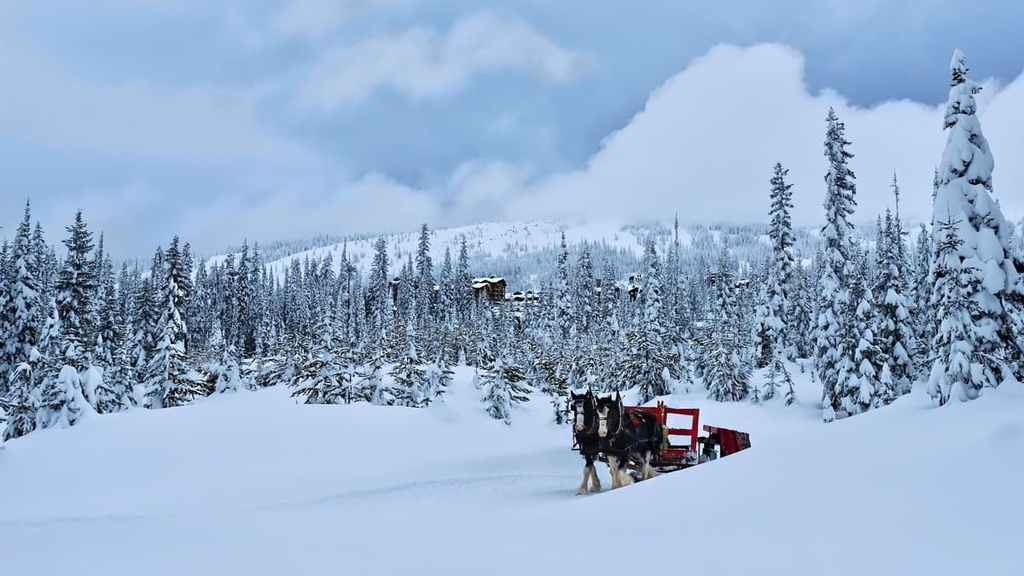
Until 4,500 years ago, the Indigenous communities in the region were primarily nomadic. Many communities traveled throughout the area during the course of the year, migrating to higher elevations in the summer to hunt and back to lower elevations in the winter to take shelter from the often harsh weather.
Around 4,500 years ago, people of the Coastal Salish culture migrated inland. The Salish culture brought immense knowledge of fishing techniques, so many of the communities in the region began using salmon as their primary food source.
With the introduction of fishing to the region, many First Nations started forming permanent winter communities. However, during the summer, many First Nations would still travel to prime hunting grounds to fish, gather, hunt, and collect supplies.
That said, wIth the introduction of the international fur trade in the nineteenth century, many FIrst Nations in the region transitioned from a subsistence lifestyle to one of hunting and harvesting furs for trade. Furthermore, as non-Indigenous settlers arrived in the region, many First Nations also adopted ranching and agriculture.
The fur traders arrived in the Okanagan in the nineteenth century and were soon followed by the prospectors and then the settlers.
As more settlers of European descent arrived, the vast forests were seen as an abundant resource. The Regional District of Kootenay Boundary, which contains Big Mountain Ecological Reserve, became a prime location for logging.
In 1972, Big White Mountain Ecological Reserve was created to preserve some of the rare, remaining old-growth Engelmann spruce and subalpine fir in the region.
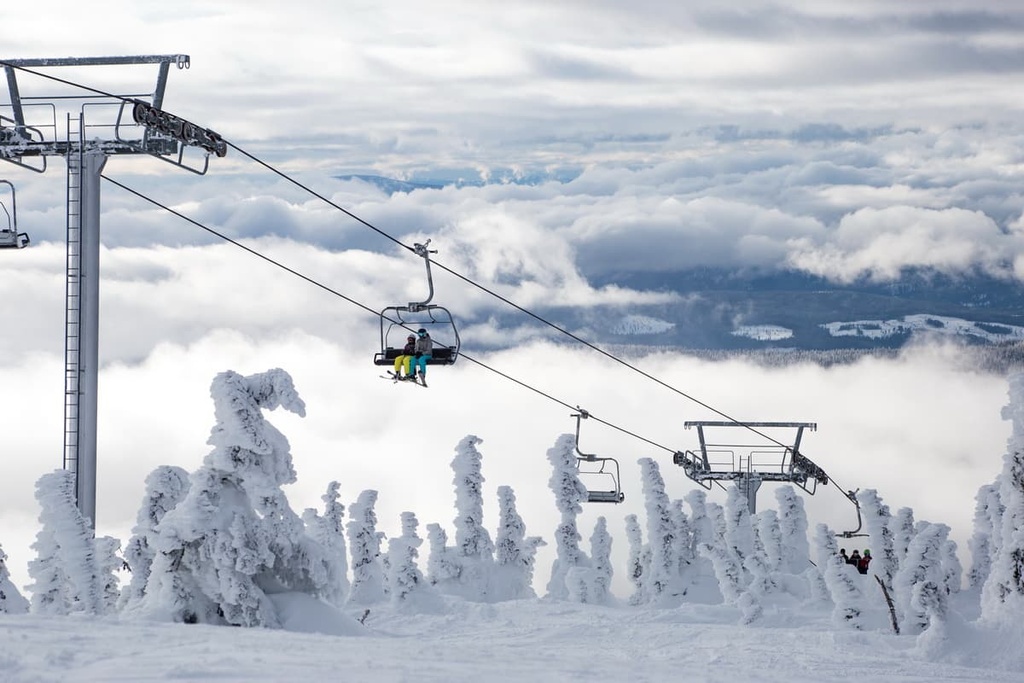
Big White Mountain Ecological Reserve was designated to protect unique ecosystems within the interior of Southern British Columbia. There are no official trails in the reserve and backcountry camping and fishing are not permitted within the reserve’s boundaries.
Additionally, group sizes are limited to a maximum of 10 people in order to minimize the environmental impact of visitors. That said, the following are some of the trails that lead into the ecological reserve that you can check out to help start your wilderness adventure:
THe BIg White Mountain Peak Trail is a 2.3 km (1.3 mi) round-trip hike that starts from the upper terminus of the Big White Mountain Resort chairlift. With the chairlift doing most of the work for you, the final 156 m (512 ft) of elevation gain is relatively easy.
The official trail ends at the peak of Big White Mountain, from where you can continue hiking the unofficial trails through the old growth forests of the ecological reserve.
The Falcon RIdge Trail is a 9.2 km (5.5 mi) out-and-back trail with 534 m (1,751 ft) of elevation gain. Starting from the resort community at the base of the mountain, the trail climbs the mountain and ends along Falcon Ridge which overlooks the resort and the surrounding area.
There are optional trails that lead to the summit of Big White Mountain as well as other unofficial trails that lead into and through the ecological reserve.
The Big White Mountain Loop is a 10 km (6 mi) trail with 618 m (2,060 ft) of elevation gain. The loop starts at the Big White Mountain Resort community and heads up to Falcon Ridge. It continues into the ecological reserve and reaches the summit of Big White Mountain.
From the peak you may hike other trails through the reserve or continue down the mountain past Rhonda Lake.
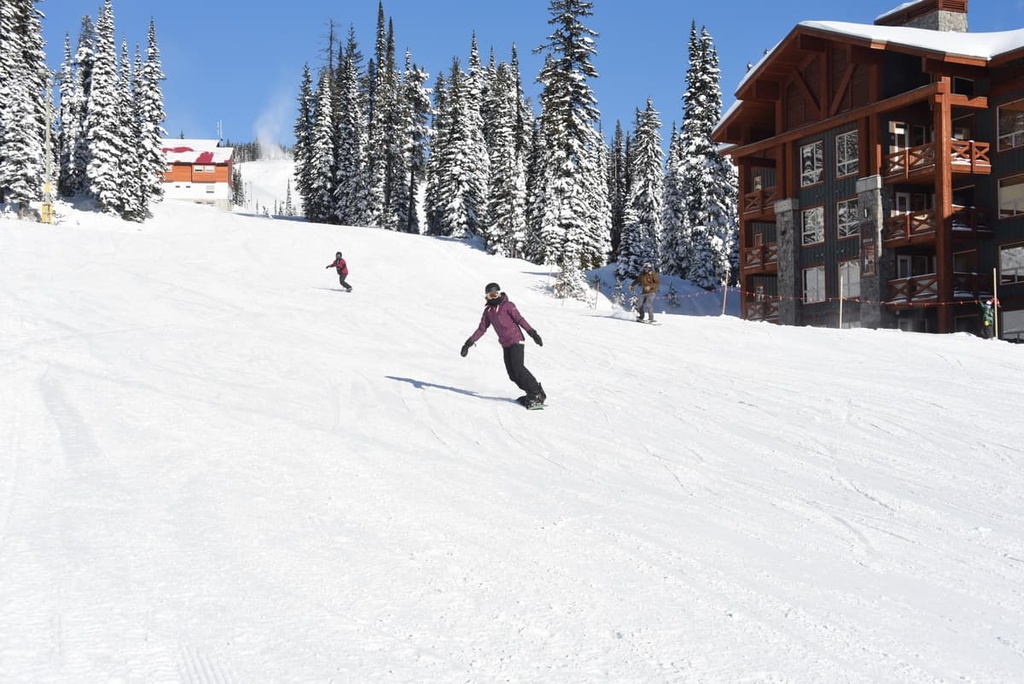
Big White Mountain Ecological Reserve is located in the Regional District of Kootenay Boundary in Southern British Columbia. There are many small communities located in close proximity to the reserve. The following are some of cities, larger towns, and accommodation options that make for a great starting point for any trip to the reserve.
The community of Trail is located about 300 km (180 mi) to the southeast of Big White Mountain Ecological Reserve.
It was named after the Dewdney Trail, which once passed through the area. The Dewdney Trail was a trail that roughly paralleled the Canada–US border. It linked together the early mining settlements of the British Colony of British Columbia to prevent US intrusion into the region.
Located along both banks of the Columbia River in southeast British Columbia, Trail has many attractions and hikes for visitors to enjoy. This includes Beaver Creek Provincial Park, the Columbia River Skywalk, and many museums and art galleries.
Sharing a mountain with the Big White Mountain Ecological Reserve, Big White Ski Resort is located on the eastern slopes of Big White Mountain. The resort was established in 1963. Big White is the third largest ski resort in British Columbia, and it is frequently ranked as one of the best ski resorts in Canada.
There are several different areas on the mountain that offer a range of activities including skiing, tubing, and mountain biking. There are also plenty of accommodation options at the resort, including hotels, condos, vacation homes, and a hostel. Many of the accommodations are hillside, allowing you to ski or bike to and from your doorstep.

Some of the popular hikes that depart from the resort include the Summit Trail, which leads from the top of the chairlift to the summit of Big White Mountain, and the Falcon Ridge Trail. Other popular trails include the Blackforest Loop and Bumblebee Trail. Also, the Kettle-Graystokes Snowmobile Trail is located just to the east of the resort.
Located about 60 km (36 mi) to the northwest of Big White Mountain Ecological Reserve, Kelowna is a community built on the shore of Okanagan Lake and into the surrounding hills. The city is a popular summer destination due to its favorable climate and its proximity to Okanagan Lake. There are many lakeside accommodations, campgrounds, and hotels to stay at while visiting the region.
Kelowna is a popular tourist destination thanks to its sandy beaches, countless orchards, warm weather, wineries, and a relaxed atmosphere. There are fantastic restaurants in the city that are run by First Nations-owned businesses, as well as scenic golf courses, fishing, waterskiing, farmers markets. There’s also an unusually large number of restored antique and vintage cars driving around the city.
With hot summer weather and mild winters, there are year-round outdoor adventures to be had in Kelowna. Along with the fun water-based activities on the lake, there are countless trails that take you along the shores of the lake, through the hills, along ridges, and up to the tops of the many peaks in the area.
Some of the popular hiking areas around Kelowna include Okanagan Mountain Provincial Park, Kalmalka Lake Provincial Park, North Okanagan Provincial Park, and Myra-Bellevue Provincial Park. Some other fun places to visit while in Kelowna include the communities, beaches, and parks of Peachland and Summerland.

Explore Big White Mountain Ecological Reserve with the PeakVisor 3D Map and identify its summits.







